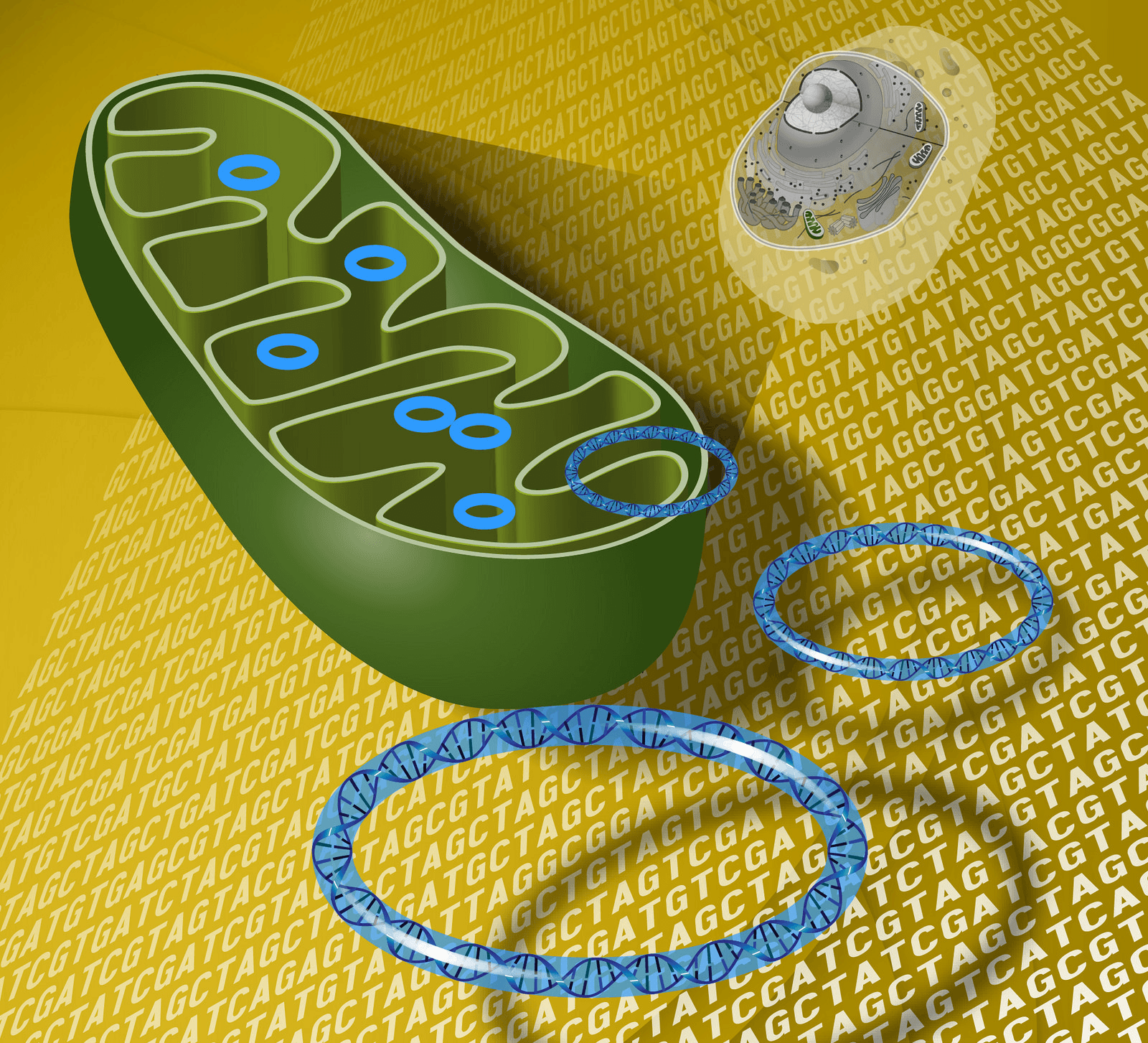In a human cell, there are two main places where DNA is located. The first location is in the more familiar nucleus, where DNA acts as a complete library of how to build a functional human with all the instructions to build various proteins needed to keep the body running. The second lesser known location is in the mitochondria (powerhouse of the cell), where the mitochondria’s own DNA makes proteins necessary for cellular respiration and keeping the organelle stable. Despite the mitochondria being the center of healthy cell function, mitochondrial DNA is 10 to 20 times more likely to have mutations than nuclear DNA because cellular respiration leads to buildup of reactive oxygen species (ROS), highly reactive molecules, that can damage the DNA. Since the mitochondria lacks the usual DNA repair functions found in the nucleus, this means that mutations can accumulate and eventually disrupt the mitochondria from building correct proteins to carry out its function.
Image Source: Dr. Don Fawcett
Problems with the mitochondria can lead to severe diseases, such as cyclic vomiting syndrome (recurring cycles of nausea), Kearns-Sayre syndrome (weakness of eye muscles and sensors), diabetes, deafness, and many other illnesses. Further investigation by scientists recently found that mitochondrial DNA damage can also have serious implications in hematopoietic (blood or immune system stem cells) diseases, chronic inflammation, and various cancers. All cells originate from stem cells, and the hematopoietic stem cell system that makes blood and immune cells is no different. When the original stem cell has a problem with its mitochondria, all the subsequent cells that come from it also retain that problem. This is why advanced cell aging and early loss-of-function in immune cells can lead to health complications. Cancers can also form and mutate rapidly because of DNA damage from mitochondrial failure. As reactive oxygen species build up from mitochondrial failure, they can generate more DNA damage or mutations, thereby perpetuating a vicious cycle.
Although mitochondrial damage seems a distant issue in most people’s thoughts, we should be aware of the rise in artificial sources of genotoxins (chemical agents that cause mutations) that directly affect DNA, as well as non-genotoxic carcinogens, which do not directly alter DNA but form cancers through other mechanisms. Some familiar forms include pesticides, chemical wastes, and industrial pollutants, which may not damage the DNA inside the nucleus to a large extent, but still pose a high risk for mitochondrial DNA damage. Therefore in the world’s best interest and yours, please be environmentally mindful of chemical usage!
Feature Image Source: Mitochondria DNA by National Human Genome










